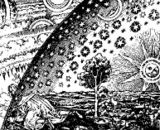Questions like this worry me on a number of levels.
First off, this specifically is the type of question on a topic that stems from pure imagination, and as such, has no clear answer, nor could it ever. They're like asking "How many angels dance on the head of a pin?", a question that did indeed inspire (what passed for) intellectual debate in medieval times, but today falls somewhere between quaint and absurdly naive to even consider.
Also because, as a Saga Guide/Story Teller/Game Master, as a generally imaginative person (you DO role play, right?), you should be able to come up with any number of answers yourself. This is like asking "What should I name my character?", or "What should he have for breakfast?" You can get others' opinions/suggestions, but they will have far less to do with you, your character, and your saga than any answer you could provide.
Lastly, any answer depends on any number of variables that are personal to you, your Troupe, and your Saga. Questions of (medieval) world view, how you and yours view and play the Paradigm, and what you enjoy in a game. But to illustrate my point, I'll kick around just a few of these, in case you really need to get jump started:
In the core book, it says "The Lunar Sphere is the innermost of the Celestial Spheres, which carry the stars and the planets on their revolutions around the earth..." Now- what is this made of? Is it concrete, or magical? Probably neither- "Most magi think (the limit of the Lunar Sphere) derives from the Divine." What exactly is a "Celestial Sphere", as made by the Creator? Is it a boundary that we can comprehend? Are we, the earthly sphere, one thing, and beyond "our world" something other?
Now- what happens when you get really close to it? Is it concrete, is it moving, and how fast? Is it touchable? If you can touch it, is touching something purely of "the Divine" survivable by a human? By a mage? Is it intangible, or even perceptible? Is it penetratable by mortals? What lies beyond? (Remember, nothing in paradigm about "space" or "a vacuum"). What's the aura there, near or beyond a thing quite likely purely of the Divine and literally outside the Realm of men? When do the rules of Hermetic magic change- really close, or at , or just beyond?
Is this really something that a (sane) mage would want to try? How many angels can dance on the head of a pin, in my saga? What should my mage have for breakfast?
For more authoritative reference, I'd suggest you read Aristotle, Dante, Aquinas, and any number of other sages of the time who took it upon themselves to speak of how these things worked, or might possibly.
Have fun with your saga, and the decisions you make for it. Let us know how it turns out.

 Cheers.
Cheers.
